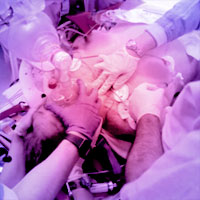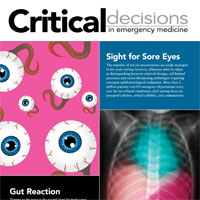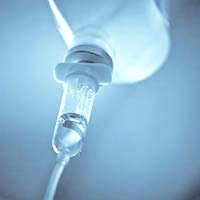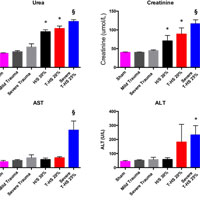Tag: trauma

The Elevated Troponin: What else besides ACS could cause troponin elevation?
The increased troponin used to be a straight ticket to the cardiology service. Now, the picture isn't so clear. What do you need to consider in the patient with elevated troponin? Cardiac troponins consist of three proteins:... read more

When the Air Hits Your Brain: Tales from Neurosurgery
With poignant insight and humor, Frank Vertosick Jr., MD, describes some of the greatest challenges of his career, including a six-week-old infant with a tumor in her brain, a young man struck down in his prime by paraplegia,... read more

Hurt: The Inspiring, Untold Story of Trauma Care
Told through the eyes of a surgeon who has flown on rescue helicopters, resuscitated patients in trauma centers in Houston and Chicago, and operated on hundreds of trauma victims of all ages, Hurt takes us on a tour of the... read more

The Contemporary Timing of Trauma Deaths
In this study, the distribution of trauma deaths no longer appears to be trimodal. This may reflect advances in trauma and ICU care, and the widespread adaption of damage control principles. Early deaths, however, remains... read more

Haemostatic Resuscitation in Trauma: The Next Generation
The next generation of haemostatic resuscitation aims at applying a ratio 1:1:1 driven strategy while using antifibrinolytics, haemostatic monitoring and avoiding critical fibrinogen deficiency by substitution. Mortality... read more

Critical Decisions in Emergency Medicine
American College of Emergency Physicians regularly publishes Critical Decisions in Emergency Medicine to keep emergency medicine professionals up to date on relevant clinical issues. Build your clinical arsenal with Critical... read more

The Post-injury Inflammatory State and the Bone Marrow Response to Anemia
The pathophysiology of persistent injury-associated anemia is incompletely understood, and human data are sparse. Objective: To translate pre-clinical findings by characterizing injury-associated anemia among critically ill... read more

The Role of Speech and Language Therapy in Critical Care
The role of speech and language therapists (SLTs) in critical care can be unclear so this article sets out the scope of practice to increase awareness of the value of SLTs as part of the wider multidisciplinary team. Speech... read more

Strategies for Intravenous Fluid Resuscitation in Trauma Patients
Fluids are drugs and should be managed as such. Appropriate early fluid resuscitation in trauma patients is a challenging task. Care should be taken in selecting both the type and volume to promote appropriate perfusion and... read more

Early Interventions for the Prevention of Posttraumatic Stress Symptoms in Survivors of Critical Illness
Despite a paucity of high-quality clinical investigations, the preponderance of evidence to date suggests that 1) posttraumatic stress disorder among survivors of critical illness may be preventable and 2) early interventions... read more

Implementing Treatment Algorithms for the Correction of Trauma Induced Coagulopathy
The 5-year TACTIC project is a multi-component study, a main focus of which is the development of European-wide clinical trial, entitled "Implementing Treatment Algorithms for the Correction of Trauma Induced Coagulopathy... read more
Whole Blood – More than the Sum of Its Components?
This retrospective analysis was conducted in a US Military population across 6 combat hospitals in Iraq and Afghanistan between January 2004 and October 2007. Patient's transfused at least 1 unit RBCs met inclusion criteria... read more

A 10-year review of total hospital onset ICU bloodstream infections at an Academic Medical Center
Across all ICUs, the rates of primary BSIs progressively fell from 2.11/1000 patient days in FY05 to 0.32/1000 patient days in FY14; an 85.0% decrease (P<0.0001). Secondary BSIs also progressively decreased from 3.56/1000... read more

Scavenging Circulating Mitochondrial DNA as a Potential Therapeutic Option for Multiple Organ Dysfunction in Trauma Hemorrhage
Trauma is a leading cause of death worldwide with 5.8 million deaths occurring yearly. Almost 40% of trauma deaths are due to bleeding and occur in the first few hours after injury. Of the remaining severely injured patients... read more




